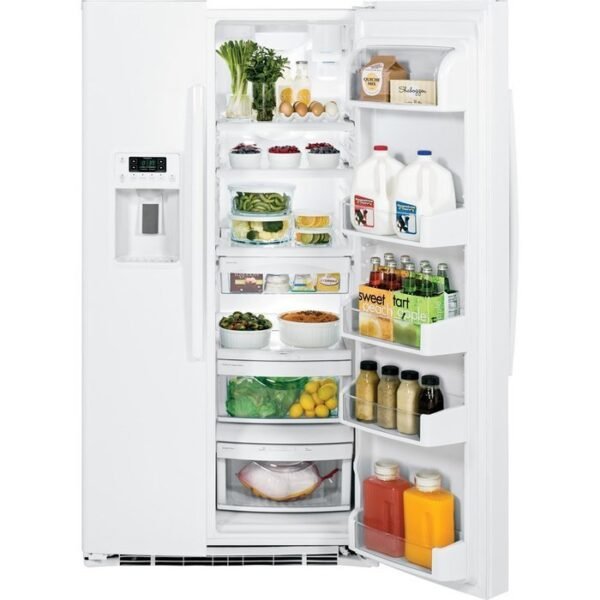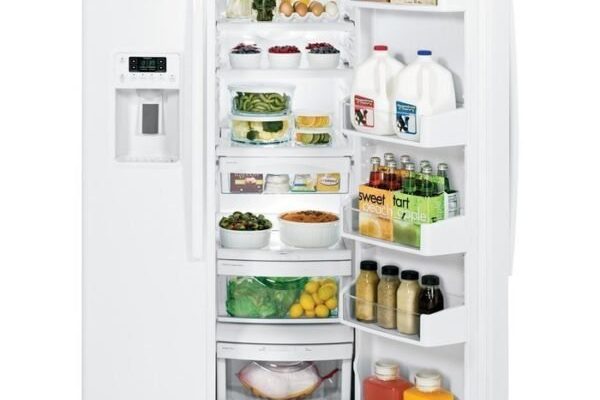
Imagine your refrigerator as a busy kitchen assistant. It quietly works in the background, maintaining a perfect environment for your food. However, just like any loyal assistant, it needs some care and attention to perform its best. The Error Code LE is your fridge’s way of telling you there’s a problem, much like a blinking check engine light in your car. By understanding what causes this error and how to prevent it, you can extend the life of your refrigerator and keep those pesky alerts at bay.
Understanding Error Code LE
Let’s dive into what this error code means. When your GE refrigerator displays Error Code LE, it signifies a problem with the icemaker’s water supply. Essentially, something is keeping the icemaker from receiving the water it needs to function properly. Think of it like a chef who can’t cook because the gas line’s been cut off. The icemaker relies on a steady flow of water to make ice, so any disruption can trigger this error.
Several factors could cause this disruption. It might be a kinked water supply line, which is like a twisted garden hose—no water, no ice. Or, it could be a clogged water filter, acting like a sieve that’s become too clogged to function. Occasionally, a malfunctioning water inlet valve could be the culprit, akin to a faucet that’s stopped working.
Understanding these components is crucial because it helps you identify where the problem might be. Next time you see LE flashing on the display, you’ll know to check these specific areas instead of panicking. Knowing what each part does makes it easier to troubleshoot and fix the problem without calling in the experts.
Regular Maintenance Tips
Now that you know what causes Error Code LE, let’s talk about prevention. Regular maintenance is key to keeping your refrigerator in tip-top shape. It’s like giving your car regular tune-ups; neglecting it might save time now, but it’ll cost more in repairs later. Start by checking the water filter. Over time, these filters can get clogged with impurities, much like a coffee filter does when filled with grounds. Replace your water filter every six months or according to the manufacturer’s instructions to ensure a clean, steady water flow.
Next, examine the water supply line. This is the conduit that channels water to your icemaker. Make sure it’s not kinked or damaged. Imagine running a marathon with a sprained ankle; you wouldn’t get far, would you? The water supply line is no different. It needs to be in perfect condition to function effectively.
Lastly, routinely inspect the water inlet valve. This valve is crucial because it controls the water supply to the icemaker. If it’s faulty, it’s like a gate stuck closed, preventing water from passing through. By checking these parts regularly, you’ll catch potential issues before they escalate into full-blown errors.
Troubleshooting Common Issues
Sometimes, despite our best efforts, things still go wrong. That’s okay! Let’s walk through some common troubleshooting steps you can take. First, if you suspect the water supply line is to blame, check if it’s securely connected. Even a slightly loose connection could stop water from reaching the icemaker. Tighten any loose fittings, much like securing a leaky garden hose to stop the water from escaping.
If the water filter seems clogged, replace it immediately. It’s a simple fix that can have a big impact, like changing a light bulb to restore brightness. Fresh filters ensure clean water reaches your icemaker, reducing the chances of an error code.
Sometimes, the issue lies with the water inlet valve. If, after checking other components, you still see Error Code LE, this valve might need replacing. While this might require a bit more technical skill, don’t hesitate to reach out to a professional if you’re unsure. Think of it as calling a mechanic to fix an engine problem—it’s better to get it right the first time.
Preventing Future Issues
Preventative measures are your best friend when it comes to avoiding Error Code LE. Consider setting a maintenance schedule for your refrigerator. It doesn’t have to be a chore; think of it as a routine health check-up for your appliance. Regularly replace the water filter, inspect the supply line, and test the water inlet valve.
Another helpful tip is to be mindful of the fridge’s placement. Ensure it isn’t cramped in a tight space. Proper ventilation helps the appliance operate efficiently, much like how fresh air helps you breathe easier. Space also prevents kinks in the supply line, reducing the risk of water flow problems.
Finally, keep an eye on the water pressure. Too high or too low pressure can affect the icemaker’s performance, similar to how extreme stress affects our performance. You can measure the water pressure using a gauge and adjust it if needed. Keeping these practices in check will help your refrigerator run smoothly for years to come.
In conclusion, understanding and preventing GE refrigerator Error Code LE is all about consistent care and attention. By following these steps and tips, you can enjoy the peace of mind that comes from knowing your refrigerator is well taken care of, avoiding those annoying error codes in the future.
